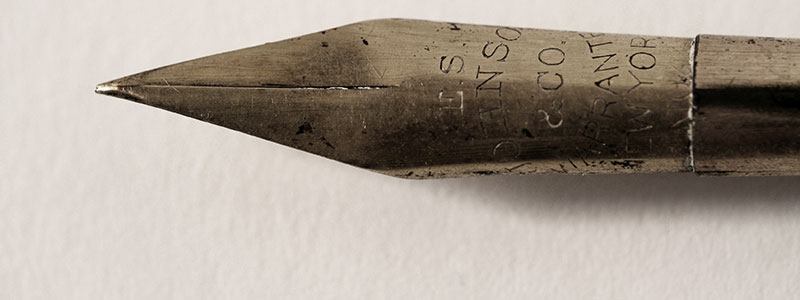Stories are Lies! But not in a Courtroom. Authors of fiction can write a story as they see fit, constrained only by their imagination. Lawyer story tellers, on the other hand, are confined to the facts of their case. From time to time all lawyers want to stray from our case facts to tell a better story, but we can’t. Instead, we must arrange the given facts, emphasizing the good and explaining away the bad. While some unethical lawyers blur the line between fact and fiction, most lawyers don’t deliberately fudge the facts to gain an edge. Skilled lawyers do, however, effectively package those immutable (and sometimes pesky) facts. This is the essence of storytelling in court. Shape the facts--both good and bad--into an interesting and believable narrative. Then use the story to sell your client’s case to the judge. And the lawyer with the better story is usually the one who wins.
But developing the story does more than just shape the narrative of the case, it also focuses case preparation. Once you know the story, you can mine the facts through investigation and discovery to both bolster your story and respond to your opponent’s story. You can determine what is important and what to disregard. The evidence you gather will serve as building blocks of the both the story and the case.
For the purposes of this article, I will use the term “story" interchangeably with the terms “narrative” or “argument.” While storytelling is not necessarily argumentative, like argument, the point of the story is to persuade. There are no cast iron rules to developing your story, but the following are factors for you to consider when building the story of your case.
1. The Aristotelian Triangle
A. Ethos. Your credibility with the court is integral to your success as a trial lawyer. In order to maintain that credibility, never take a position that compromises your honesty or integrity. Be prepared to admit bad facts and even volunteer them to draw your own blood first. Don’t take nonsensical positions to grandstand for your client. Your knowledge or character will be forever in doubt. Have the strength to not ingratiate yourself with a current client at the expense of all of your future ones. Wherever possible, try to be the most reasonable lawyer in the courtroom, not the loudest. Building a reputation for legal expertise is another component of ethos. Who will the judge believe, a lawyer who regularly studies the law and cites proper authorities or one who wings it referring to unknown or incorrect precedents? Finally, know the facts of your case. Judges tend to rely on the word of a lawyer who is well prepared and knowledgeable rather than one fumbling through his file to figure out how long the parties were married. Your reputation transcends any particular case. Always be honest, even when it hurts. Once you draw suspicion about your honesty, it follows you like a dark shadow. Conversely, if you maintain your integrity, it will shine a light on all of your arguments. When you walk into a courtroom and present your case, judges will listen. Likewise, if you carry the shadow of dishonesty, no matter how strong the facts or argument, you will be stymied convincing anyone of the rightness of your cause. People rarely listen to the story of a liar.
B. Logos. In preparing your case story, most of your time should be spent focusing on the logic or rationale behind your desired relief. An illogical story sounds stupid and calls into question your credibility. Rarely in a family law case do we address zero sum or black and white issues; most cases rest in shades of gray. Nudging the hue closer to your client with well-reasoned arguments is the goal of logos. Logos incorporates the legal theory of the case. The legal theory dictates the elements you must prove to win your case. The theory is driven by both statutory and case law. The legal theory is the foundation of the story. Determine the facts necessary to meet your legal burden and build the story from there. And always anticipate the opponents’ arguments. Listen to them throughout the case. Most will readily share their theory with you early and often. These are the same arguments that will be made at trial. And consider what you would argue if you represented the opposing party. Deconstruct the common-sense or reasonableness of the opponent's story and rebut it as part of your story.
C. Pathos. Here we are concerned with the emotional kick of the story. What facts bring the notion of “what’s right” to the narrative. The goal of pathos is to get the judge to root for your client. And if you can get a judge to do so, you go a long way towards claiming victory. Judges may forget what you say but they will not forget how you make them feel. According to Jonathan Shapiro in his book, “Lawyers, Liars and the Art of Storytelling,” pathos should be raised only after ethos and logos are first established. And as Shapiro observed, the pathos component of an argument must be subtle; one loses credibility as a reasonable and logical lawyer if the story is mere raw emotion with no rational substance underlying it. Again, per Shapiro, “the goal is to elicit emotion, not mimic it for effect.” [1] Table pounding and angry diatribes will never substitute for well-reasoned legal arguments.
2. Developing the Story
Courtroom stories, while different than fictional stories, possess many of the same elements. For example, all good stories have an impactful beginning, an interesting middle and a clear ending wrapping it all up. Good stories also use interesting language and images and incorporate elements of classical drama (theme, plot, pacing, characters, and setting). Also, good stories have a protagonist and add elements of suspense. All of these features can be included to tell a better story in court. Once developed, the story is told at various times both during and before the trial: in depositions, in pretrial hearings, at opening statement, through witness examination, by presentment of documents and exhibits, through visual aids (real evidence or demonstrative exhibits) and finally, in closing argument. But first, identify why you are telling your story in the first place.
A. Goal of the Story. Firmly understand the goal you are pursuing on behalf of your client. Know the target before you aim the arrow. Is your goal to bolster your client’s credibility and disparage the spouse’s in a “he said, she said” dispute? Or is your goal to make your client sympathetic and a victim of the spouse’s malevolence? In every aspect of trial work, begin at the end and work your way backward. In other writings I have urged preparing a final judgment when starting trial preparation. In all cases that are likely to be tried, this is an indispensable exercise that helps focus the story and determine the proofs of the case.
B. Uncovering the Story. Many lawyers are confounded by the mechanics of building the story, but we do not write the story, rather, we discover it. Like Michelangelo who described his work as chipping away the stone to find the angel inside, a lawyer works from the case history to reveal the story inside of it. But first, review your statutes governing the specific issues of the case. Look at the factors the court will consider when deciding the case. While most are intimate with their pertinent law, refreshing yourself prior to undertaking a legal task provides surprising benefits. Different nuances will become apparent every time you reread your statute. Reacquaint yourself with the law often. Next, review your file and prepare a preliminary proof chart. A proof chart summarizes the basic facts you need to prove to support the theory of your case. When listing those proofs, think about the facts from an evidentiary perspective. How can you admit the necessary facts? Often there are multiple ways to admit a particular fact: witness testimony, an exhibit, a stipulation etc. For now just itemize the facts with notes about possible avenues for admission. The proof chart should be be constantly updated until the eve of trial. By then you will need to make final choices on how to offer the evidence. Finally, listen to the client’s story. This helps you develop the pathos component of your argument. Ascertain the client’s hopes and regrets. Determine his or her notions of what’s fair and unfair. Consider some of the following questions when interviewing the client:
Does the client feel something unfair happened to him or her?
Was the client’s trust betrayed?
Did the spouse treat him or her unfairly? How?
Was the client heroic in anyway? (sacrifice)
Was the client tested or challenged by any circumstance or anyone?
Does the client describe any villainy of his or her spouse? What are the details?
What did the client sacrifice for the marriage?
What are the client’s frustrations? What keeps the client up at night?
What would his or her spouse say about the client?
Did the spouse or circumstances interfere with the client’s life goals?
Were the marital contributions uneven?
Give the client open ended questions and let him or her talk. Reflect on the answers. Don’t rush the client. Listen with your ears and your eyes. Don’t have your face down in a notepad during this critical meeting. Have a real conversation. The point of this exercise is not to intellectually weigh the evidence but to understand the client and feel the emotional pull of the case. Take notice of the words and phrases the client uses and the issues the client is most passionate about. These statements may serve as fodder for the text of the story or the theme. Once complete, start looking for the angel inside the case. Uncover the story by looking through the prism of the proofs, legal theories, and fundamental notions of right and wrong. Write a rough draft of the narrative starting with the phrase, “Once upon a time,”. Your first draft should be done stream of consciousness, without self-editing. Just get it down. By using the phrase “once upon a time” like a magical incantation, you will trick your subconscious into creating a story, rather than a dry inventory of facts.[2] You will think like a storyteller rather than a fact compiler.
C. Uncovering your Case Theme. A case theme distills the entire case into its central idea or the moral supporting the storyline. According to Christopher Vogler, author of “The Writer’s Journey: Mythic Structure for Writers,” a stories’ theme is “an underlying statement or assumption about an aspect of life.” The theme is the message you are trying to convey that encapsulates the case. Think of any words that describe the essence of the case: e.g. “sacrifice,” “trust” or “waste.” Are there any quotes or parables that illustrate the theme? Do any cultural, historical or literary references sum it up? Again according to Vogler, the theme may not be readily apparent, “The real theme…may not become, emerge or announce itself until you have worked with the story for a while, but sooner or later you must become aware of it.” Once you discover your theme, you can decide how to most effectively use it. Also the theme will allow you to order your proofs, guide examination questions for witnesses, and help determine exhibits, etc. Again per Vogler, “In a good story, everything is related to the theme.” Due to the nature of a family law case, a single theme is sometimes impossible. If you can find one that applies to both child custody and division of assets, more power to you. But that is difficult to achieve. In those instances, rather than strain to contrive an artificial theme that spans the various issues, use different themes for the different issues.
D. Creating your Masterpiece. After preparing the first draft of your story, start polishing it in anticipation of trial. Include only relevant facts that will be provable at trial. A legal story consisting of immaterial facts that you can’t prove is worthless. Consider word choice, structure, and emphasis. While your story will first be written, you will ultimately deliver the story orally at the trial. We talk differently than we write so don’t read a written story to the judge. Use the written story as a thought exercise to help you prepare the oral presentations in court.
E. Word Choice. Words are the building blocks of the story. Jeffrey Dean Doty, an author and writing teacher, advocates putting a reader into a “Dream State” to make the writing more real, “give your reader tiny little details, little pictures, sounds, smells, textures, and tastes that they already have inside them, and then get them to relate those things to moments in your story that feel familiar and they will go into the dream state without even noticing when it happens.” [3] Similarly, when telling our story we want to make it real for the judge. While we are not necessarily seeking to invoke Doty’s “Dream State,” we are trying to get to the same place—making our story real for the judge. To do this, use concrete words, not abstractions. “Love” “fear”, “anger”, and “excitement” are examples of abstractions. Tell the story with real life conduct rather than relying on abstractions. Show, don’t tell. Use strong action verbs and simple descriptive words rather than legal jargon. As Doty instructs, incorporate sensory references into the story. For example, “she stroked her daughter’s forehead, feeling the burning heat pouring off of her,” has more impact than “her daughter had a fever.” But be careful not to make it hokey or trite. Avoid clichés and other overused jargon. Incorporate rhetorical devices into the storytelling. Consider using alliteration for emphasis (e.g. veni, vidi, vici). Another rhetorical device, anaphora, is the artful use of repetition to persuade. For example, consider Churchill’s use of anaphora to inspire Great Britain, “we shall fight on the beaches, we shall fight on the landing grounds, we shall fight…” Repetition generally is a powerful persuasion technique. Lincoln often used cadenced repetition in his writing and speeches. Lincoln also was fond of the use of antithesis, the balanced opposition of words and phrases. Use trilogies as well. Use three examples or three illustrations when making a point. Wherever possible use your opponent’s words against him or her. Incorporate into your story admissions by the opposing party or statements made by the opposing attorney. Invert statements your opponent considers positive and through rhetorical Jiu Jitsu, show how they actually support your theory or theme. Metaphors are also instructive. Metaphors serve as useful reference points, particularly for hard to understand concepts. Metaphors or fables are also helpful to illustrate the theme of the case. “This case is reminiscent of Aesop’s Ant and the Grasshopper story…” Also, consider appropriate wisdom quotes to emphasize a point. Finally, cement data by using analogies. E.g. “Mr. Jones earns $500,000 per year, roughly twice the income of Chief Justice Roberts.” To paraphrase Will Rogers, bait the hook with what the judge likes, not what you like. Tell stories that will resonate with the particular judge. Determine your judge’s personality and interests. Identify the judge’s background, hobbies, general demeanor and political views. Use metaphors, quotes, analogies and arguments that will appeal to those interests. For example, don’t quote FDR to a staunch conservative, find a Reagan quote instead. If your judge is a golfer, use golf metaphors. If your judge is a foodie, consider food references. Link the judge’s interests to the point you are making for greater impact. Always play to your audience.
F. Structure. The story should contain an introduction, the story itself and then a conclusion, which includes the “big ask,” a clear summary of what you want the judge to do. The structure should be coherent but not necessarily chronological, particularly in a case that has multiple issues. Generally, build into your story a discussion of your positive evidence, your negative evidence (explain it), your opponent’s positive evidence (why it is not as good as it appears) and the opponent’s negative evidence. Don’t hide your good stuff in the middle. Highlight it early in the storytelling; emphasize your client’s positives more prominently than the opponent’s negatives. Rarely does tearing down the opponent work without highlighting your client’s positives first. And don’t overlook your client’s negatives or case problem areas. Spin them as best you can. Offer reasonable explanations. Sometimes a mea culpa with no explanation is the best you will do. But in no event can these problems be ignored. Your opponent assuredly won’t ignore them.
4. Presenting the Story
Once the story is finalized and the theme has emerged, consider how you will use the story. Start right away, before trial starts. Use the story and theme in pretrial conferences, trial memoranda, or in motions in limine. The more you can ingrain the story into the judge’s consciousness, the stickier it will become. A skillful advocate starts telling the story before the first witness is called.
A. Introducing the Story at Trial. Usually the story is first presented in the opening statement. The opening statement is not technically argument so you can’t editorialize or comment on the evidence to come. But you can package the facts so that they are persuasive and tell the story in a favorable manner. Don’t waste the opportunity. Start, in the opening by planting the seeds of the story. During the witness examination you water those seeds. Finally, in the closing argument you will harvest the results. Whenever possible use the opening to immediately get the judge’s attention. Start with something unexpected to interrupt his or her mental pattern. Most of us tend to tune out the mundane. Our brain notices change or the unusual. This is why urban legends tend to grab all of our attention. They usually contain some unusual or interesting plot twist. Remember your judge has likely heard many cases with similar issues, facts, and circumstances. Anything you can do to distinguish this case will help make the story stickier and more memorable. Also known as a “grabber,” your initial pattern interrupt tries to immediately solicit the judge’s attention and keep it on your story. Examples of some ways to do this might include:
Start the presentation with an interesting question rather than a declaration.
Invert the timeline using flashback. Start with the end of the story and then recount the events leading up to it.
Say something surprising or ironic.
Start with a parable or common cultural reference.
Make a statement that leaves the judge guessing.
Use an interesting snippet or anecdote that will be revealed in the evidence and use it to introduce your theme.
Make an intentionally short opening to create anticipation.
Use admissions of an opponent, quotes by the client or other witness.
Use visuals or props.
In looking for ways to interrupt the judge’s pattern, don’t use gimmicks or oversell. And remember: you need to prove any fact you offer at this point. Don’t play fast and loose—if you can’t prove it, leave it out. Always maintain your decorum and credibility with the court.
B. Telling the Story through Evidence. After the story is introduced in an opening statement, you tell it using the evidence. When preparing, determine the proofs or facts necessary to support you theory, theme and the overall storyline. Identify the best way to tell the story with the evidence. Is it through the testimony of your client or an adverse witness? Will a document be the best way to illustrate a particular fact? Ascertain the best method of telling the story by presenting the evidence in the most persuasive manner. Consider the order of your evidence. Start and finish strong. Powerful evidence should not be hidden. Shine a light on it by placing it at the beginning or the end of the examination. Place less important or harmful evidence in the middle. Never end the examination on a weak or negative point. Always finish strong. Also, tell the story visually where appropriate. Use diagrams, charts, graphs and any other visual images to illustrate the story. PowerPoint or other visual aids are critical to courtroom success. Sometimes, to expedite a trial, parties will offer stipulations on evidence. Balance the efficiency of a stipulation against what you lose in opportunities for persuasion. What is more persuasive, a stipulation that your client is a homemaker, or her testimony about all of the arduous tasks she tackles on a daily basis? When examining witnesses, use the same words or phrases you referenced in your opening statement. If, for example, your theme involves dad’s sacrifices for the family, make sure to cloak your questions (and prepare your client for answers) that incorporates words or phrases referencing that theme. “What else did you give up when…?” Generally use repetition throughout the trial as a device to hammer home the case theme. And don’t overlook opportunities to tell the story during cross examination. Remember, you testify during cross. Tell your story through their testimony. Exploit admissions by the opposing party and fold them into your story. Also, any agreements you can obtain from the adverse witness during cross will color your story.
C. Concluding your Story. In the opening of the case, you got the judge’s attention, set the theme for the case, highlighted important facts or softened potentially bad facts. During the evidentiary phase of the case, you told the story through witnesses and exhibits. Now is the time to tie it all together in your summation or final argument. Unlike the opening, which precludes you from interpreting or arguing the evidence, now is the time to do so. What does it all mean? Why should a judge interpret it the way you are suggesting? Answer those questions with the law, the facts and common sense. Circling back to our Aristotelian Triangle, argue the logos and the pathos of the case. Reference your theme in the context of the evidence. Use images that communicate the message. Remember the great Johnny Cochrane’s, “If the glove doesn’t fit you must acquit?” comment from the Simpson trial. He used a concrete image (a wrinkled glove) with a rhetorical flourish to make a point that remains vibrant over 20 years later. Watch your pacing and delivery. Consider dramatic pauses to let important comments sink in. Keep your eye contact on the judge, not your script. Be yourself. Speak in a way that is natural and comfortable. Use your body to illustrate points but not to the point of distraction. Use visuals to persuade or educate. Paint the canvas in multiple colors. Make the judge see both the logic and the rightness of your position. The great Chicago trial lawyer and Judge, Eugene Pincham proclaimed, “If you don’t buy it, you can’t sell it.” Look good, believe in your client and your case and sell your story!
5. References
Once the story is finalized and the theme has emerged, consider how you will use the story. Start right away, before trial starts. Use the story and theme in pretrial conferences, trial memoranda, or in motions in limine. The more you can ingrain the story into the judge’s consciousness, the stickier it will become. A skillful advocate starts telling the story before the first witness is called.
[1] Shapiro, “Lawyers, Liars and the Art of Storytelling.” Pg. 108
[2] Credit to Hon. Willaim Bauer for this idea, cited by Terence MacCarthy in MaCarthy on cross examination
[3] Doty, "Working the words"




